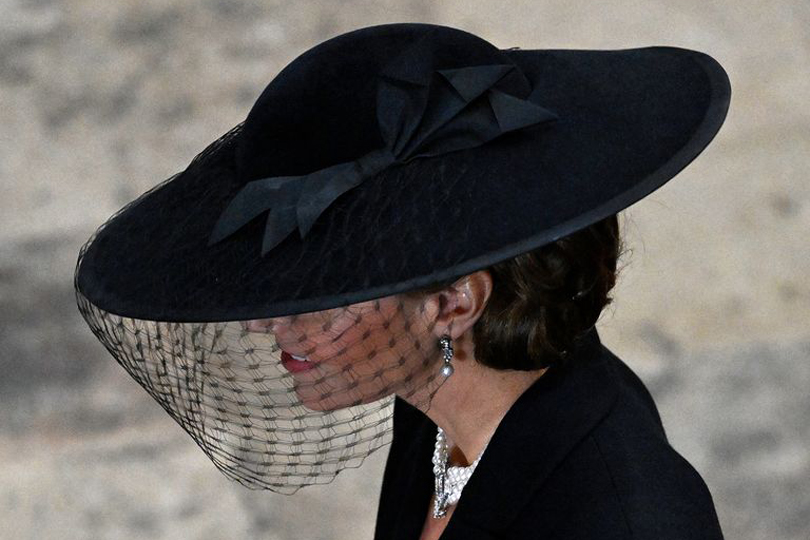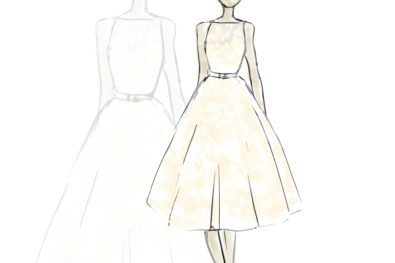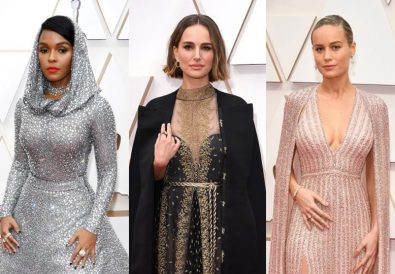By Christopher Turner
The late Queen Elizabeth II was a master of symbolic dressing, using clothes, colours, hats, handbags and jewels to subtly communicate her message. On Monday September 19, as Britain’s longest-reigning monarch was laid to rest, it was time for her family, heads of states and other dignitaries to follow suit.
Needless to say, black has been the predominant colour worn at the various events held throughout the last few days in honour of Queen Elizabeth II and for her state funeral. You may have also noticed that black mourning veils have been the prominent headwear of choice, with various global attendees and members of the Royal Family, including Queen Consort Camilla and Catherine, Princess of Wales, opting to wear a traditional mourning veil.
A mourning veil is worn by someone who is grieving as a symbol of sorrow and unlike other religious head coverings, which typically sit atop the head and cascade down the hair, mourning veils also cover the face of the wearer. Today they are made of a dark-coloured lace or netting and are nearly transparent, serving both an aesthetic purpose as well as a practical one, used to grant privacy during a period of mourning.
Interestingly, this royal tradition of wearing mourning veils dates back to Queen Victoria’s reign (1819-1901). At this time, widows were expected to display their grief publicly.
The perpetual widow
Queen Victoria is often referred to as “the perpetual widow,” and after her husband Prince Albert passed in 1861, she famously chose to wear a mourning veil and some form of mourning dress up until her death on January 22, 1901. In fact, she never wore her Imperial State Crown again because it would have required her to take off her mourning veil. Queen Victoria also began a tradition of wearing pearls while in mourning. Pearls were he only jewellery that she would permit herself to wear during this period- as they symbolized grief and tears.
Queen Victoria’s dedication to her deceased husband had a significant influence on the Victorian mourning customs of women.
During the Victorian Age, widows were expected to display their grief publicly rather than quietly reflecting in private. Mourning veils, which were worn for months or sometimes years, were much thicker and longer than they are today, and often covered both the front and back of the head. Because the black crêpe fabric used at the time was designed not to reflect any light, it was also considered a symbol of the removal of light from the widow’s life.
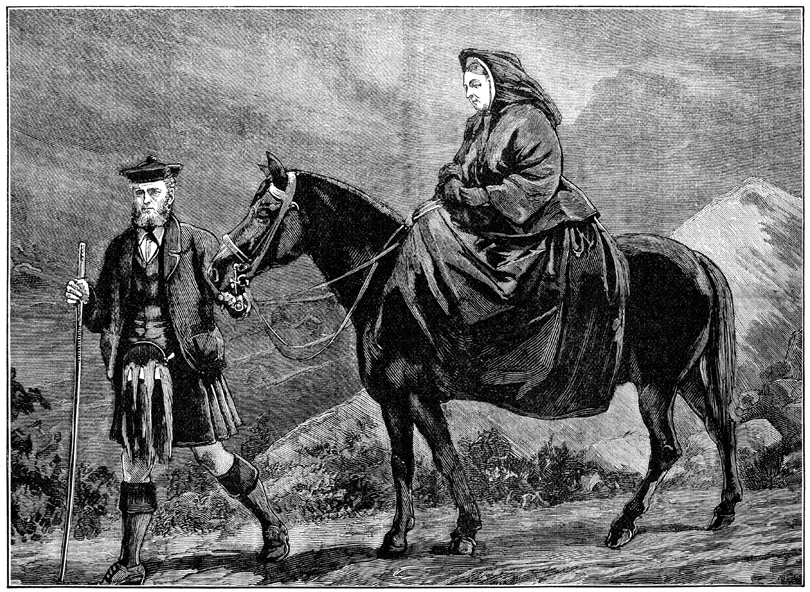
Previously, a tradition of ‘white mourning’ had lingered among the royal family, which was established by Mary Queen of Scots who wore white to symbolize the loss of members of her family in the late 16th century. The Queen Mother herself adhered to this ancient uniform as late as 1938, at the funeral of her own mother, the Queen’s grandmother.
Ceremony and tradition
Royalty is built on ceremony and tradition, and Queen Victoria’s use of the mourning veil became part of the tradition for solemn royal events. 70 years ago, Queen Elizabeth II wore a long mourning veil that covered both the front and back of the head, for the funeral of her own father, King George VI on February 15, 1952.
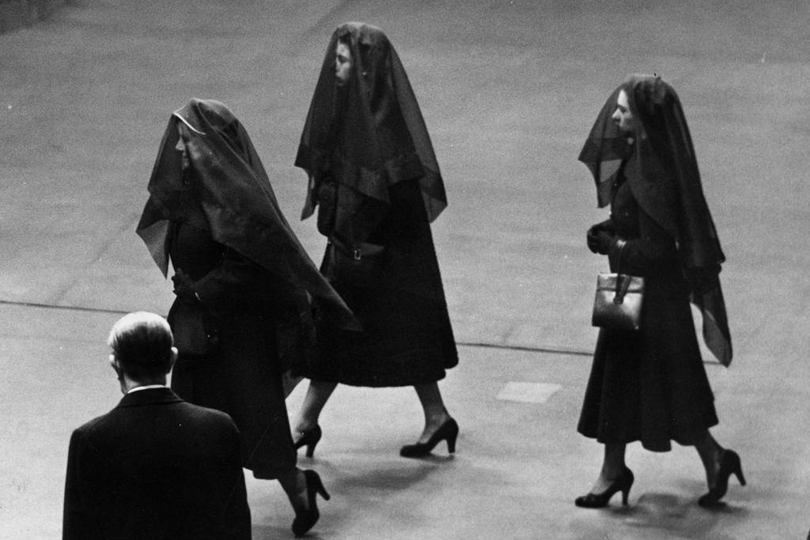
Over the decades, the impractically long mourning wardrobe traditions went out of style, but Victoria’s influence is still present in modern royal mourning periods.
For Princess Grace of Monaco’s funeral in 1982, Princess Diana wore a black straw hat with a black veil. More recently, Princess Anne wore a mourning veil to her father, Prince Philip’s funeral, in 2021.
Today, custom dictates that royal women must wear black knee-length dresses or coats, black hats and may also wear face-covering veils when attending a state funeral. Custom dictates that men attending a state funeral wear black coats, while men who are working members of the royal family traditionally wear military uniforms.
RELATED:

